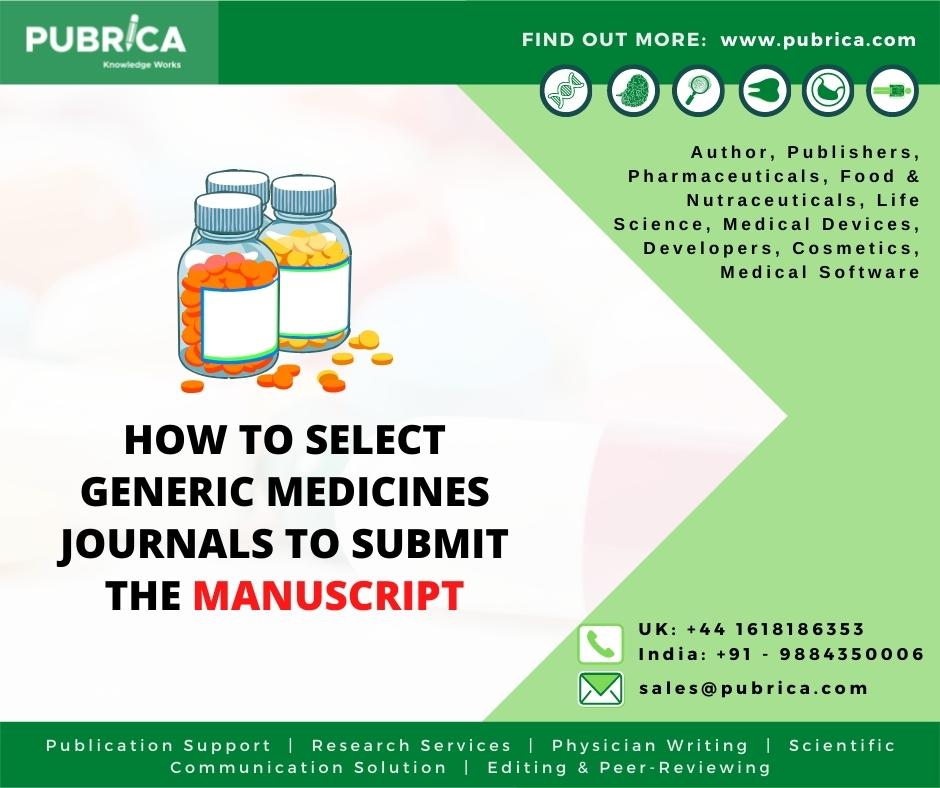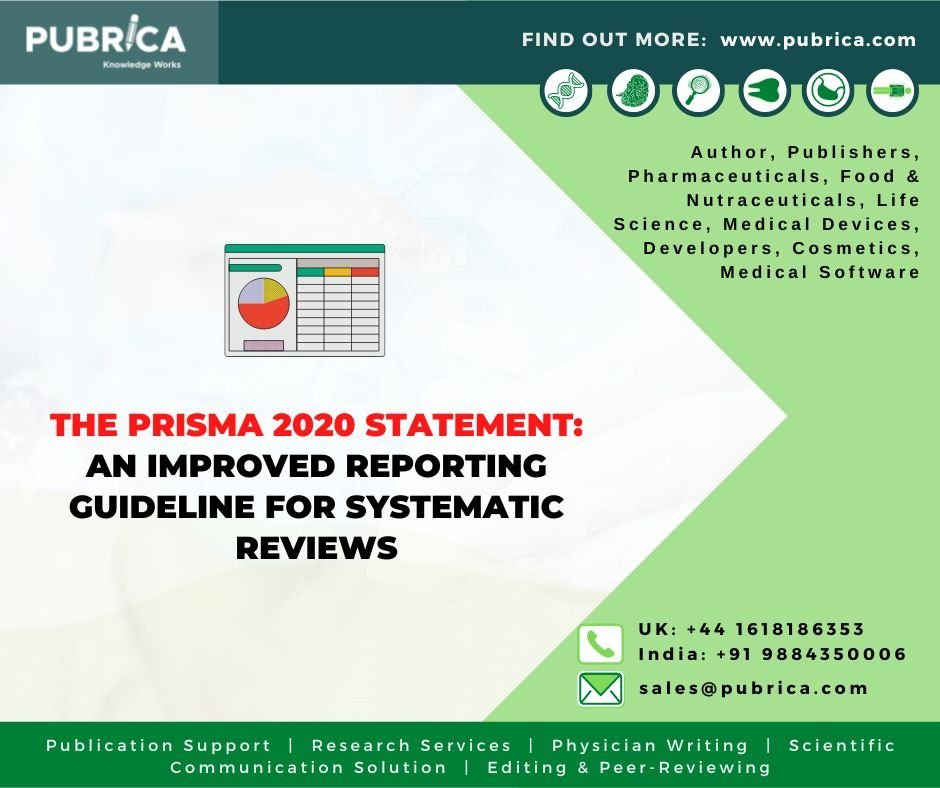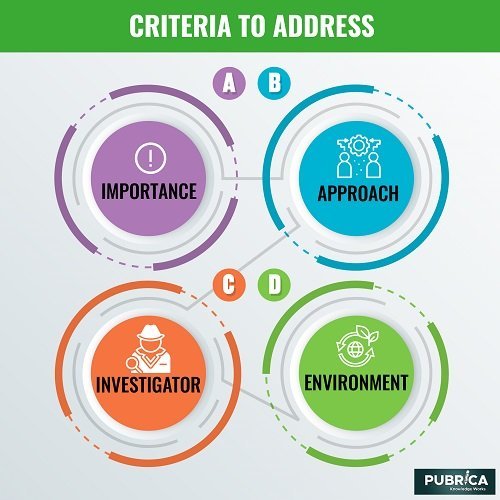
How to select Generic Medicines journals to submit the manuscript
May 24, 2022
The PRISMA 2020 statement: An improved reporting guideline for systematic reviews
June 9, 2022In brief
A Biosimilar grant research proposal is essentially a work plan for testing a hypothesis or group of hypotheses to solve a research issue. One of the essential things to recollect when writing a proposal is that authors must personalize it to the intended audience. If the study proposal is submitted as part of a biosimilar grant application, writers must write it so that reviewers unfamiliar with their field may comprehend the research challenge and why the project should be funded. A typical Grant Proposal Writing Services typically has a title, a synopsis of the goals and expected outcomes, a literature review, research methods, a suggested schedule, and references, among other items. The objective of this blog was to critically examine the biosimilar grant proposal writing Write An Academic Grant Proposal by Sabrina Z and Cohen from Vanderbilt University’s Department of Orthopedic Surgery in Nashville, Tennessee, USA. An excellent research title’s qualities focus on captivating the reader’s interest. Word limitations, formatting, and what constitutes important material will all be determined by the institution or faculty and rigorously followed.
Introduction
Writing an Effective Biosimilar Grant Research Proposal
Since the institution will choose what should be included in the research proposal, the following section will focus on basic guidelines for writing a high-quality research proposal.
- A good research title should be understandable to someone who isn’t an expert on the topic. It should be regarded as a promotional tool rather than a scientific understanding of medical research grant proposal writing. The title should be read aloud by the authors. Authors should think about whether the title is obvious and if the relevance of what they’re trying to achieve is clear. The objective of the title is to pique the reader’s attention. Thus it must be brief and easy to understand while explaining why this study is necessary.

Background and significance
The background and significance section’s objective is to explain the justification for the planned research topic and synthesize currently accessible data from the literature relevant to the project. If there hasn’t been a systematic review or meta-analysis on the subject, you should do one. Depending on the project’s scope, you may wish to conduct a survey of surgeons to learn about their treatment preferences. Regard conducting a poll of patients to understand what they consider the most significant result. There may be some differences of opinion between surgeons and patients.
Criteria to Address
Many additional types of research grant writing service funding organizations evaluate submitted research grant proposals based on these similar criteria, with a concentration on biomedical research:
- Importance: Able to further the funding organization’s mission.
- Approach: Methods are well-designed to answer the hypothesis, and the budget is adequate.
- Investigator: Backgrounds of investigators provide value • Innovation: Proposes a distinct and creative method
- Environment: Provides adequate assistance/facilities
The Importance of Counteracting Biosimilar
Since many healthcare professionals and patients are unfamiliar with biosimilars, their usage is restricted in several healthcare systems. Disparagement of biosimilars and the spread of disinformation worsen the knowledge gap, whether deliberate or not. There are several types of disparagement and misinformation directed at biosimilars as a group, including factually incorrect statements about biosimilar science or policy; misleading information, where the information is correct but provided out of context; incomplete information, where only a partial or limited set of facts are provided; and the creation of a false narrative, particularly in scientific grant writing services and medical literature, that provides a set of replies to the points.
Structure of the Grant Proposal
While the required framework for a research grant proposal varies, the following elements are usually included:
Title page or cover letter: Although many funding organizations have a set structure for the title page or cover letter, it may consist of the following:
- Title of project
- Names of investigators/home institution
- Name/address of the funding organization; the name of the relevant program officer
- A statement addressing the funding agency’s priorities and the proposed project’s relation to achieving these goals
Writing for Success
When it comes to presenting study data for publication, many researchers may have prior expertise in academic writing. The medical research grant writer necessary for creating excellent research funding proposals, on the other hand, is distinct. The author of a grant application sells a concept to the reader, whereas the author of a publication explains the results to the reader. As a result, the terminology in a grant proposal should be interesting, and the sentences should be brief. Ease of comprehension is crucial in general. Remember that the reader may or may not be an expert in the topic, depending on the funding agency.
Protecting against bias
Multiple forms of bias, namely selection bias and measurement bias, can negatively impact study outcomes. The investigators must describe the recommended measures for bias protection. Randomization, concealment of randomization, blinding, and an objective result measure are the most effective approaches for preventing bias.
Conclusion
Biosimilar Grants are essential for academic medicine’s success. A good concept and the ability to “sell” your proposal to the funding agency’s reviewers are the keys to a successful research grant. Good background research, a good study design, and a well-thought-out technique are necessary to “sell” your proposal. It’s also crucial to remember that research is a collaborative endeavour. It is critical to persuade the grant reviewer of your knowledge; hence, selecting experienced team members increases the chances of receiving the required funding.
About pubrica
Pubrica’s team of researchers and authors develop Scientific and medical research papers that can act as an indispensable tool to the practitioner/authors. Pubrica medical writers help you write and edit the introduction by introducing the reader to the shortcomings or empty spaces in the identified research field. Our experts know the structure that follows the broad topic, the problem, and background and advance to a narrow topic to state the hypothesis.
References
- Sabrina Z. Soracco (2014, September 26) How To Write An Academic Grant Proposal. Retrieved from ResourcePackage
- Cohen, Hillel P., and Dorothy McCabe. “The importance of countering biosimilar disparagement and misinformation.” BioDrugs 34.4 (2020): 407-414.
- Zlowodzki M, Jönsson A, Kregor PJ, Bhandari M. How to write a grant proposal. Indian J Orthop. 2007;41(1):23-26. doi:10.4103/0019-5413.30521
